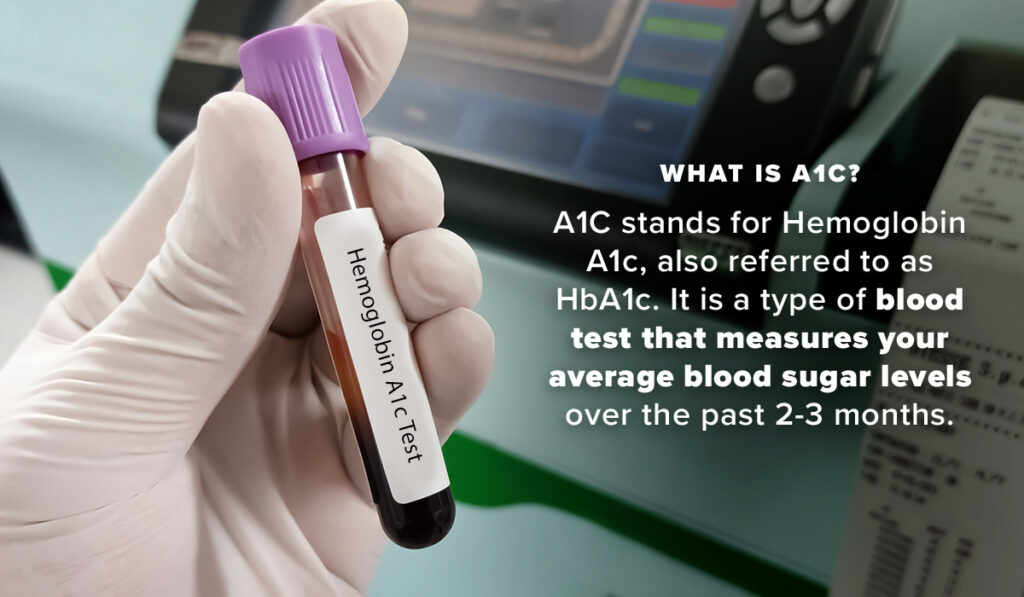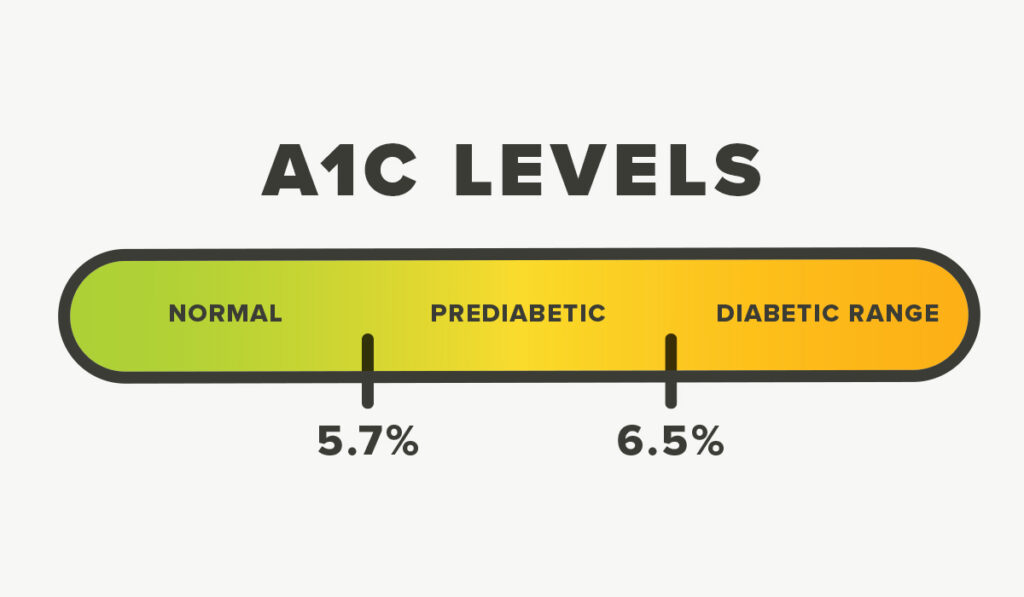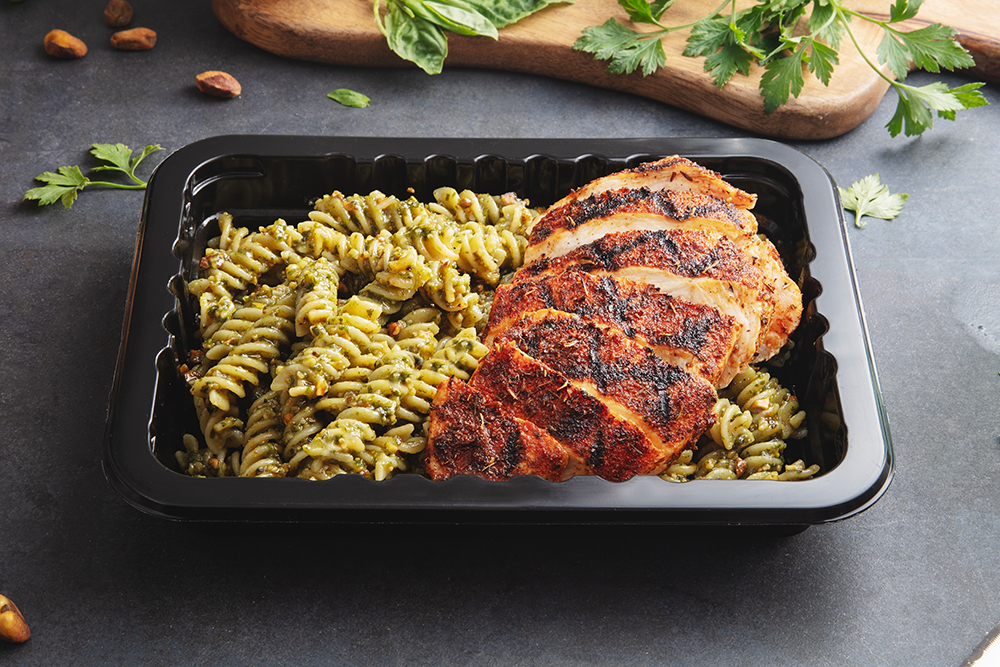Did you know that whether you have diabetes or not, the foods you eat directly impact your blood sugar levels? This can feel overwhelming considering we make hundreds of choices about the foods we eat daily. However, by simply following a balanced diet, you can minimize spikes in blood sugar and promote better overall health and blood sugar control, reflected in a lower A1C.
So forget fad diets and restrictive plans. This article will show you how to use the power of food to sustainably manage your A1C and feel fantastic.

What is A1C and Why Does it Matter?
A1C stands for Hemoglobin A1c, also referred to as HbA1c. It is a type of blood test that measures your average blood sugar levels over the past 2-3 months. For those with diabetes, A1C helps determine how well their diabetes treatment plan is working. By tracking A1C over time, adjustments can be made to medication, diet, and exercise routines to optimize blood sugar management.
An elevated A1C result can also indicate prediabetes, a condition with higher blood sugar levels than normal but not high enough for a diabetes diagnosis. Early detection of prediabetes allows for lifestyle changes to potentially prevent the development of type 2 diabetes.

How & When Do You Monitor A1C?
The A1C is a simple blood test that your doctor can order. It can also be done with a simple point-of-care finger stick in some doctor’s offices or through test kits you can buy at home.
If you have diabetes, your doctor will tell you how often you need the A1C test, but usually you’ll have the test at least twice a year if you’re meeting your treatment goals. If you’re not quite meeting your goals or you change treatments, you may need to get an A1C test more often.
What do the A1C Levels Mean?

According to the American Diabetes Association, If your A1C level is between 5.7% and less than 6.5%, your levels are in the prediabetes range. If you have an A1C level of 6.5% or higher, your levels are in the diabetes range. Anything lower than 5.7% is considered normal.
For those with a diabetes diagnosis, A1C target levels can vary due to several factors. The goal for most adults with diabetes is an A1C that is less than 7%.
Strategies for Lowering A1C with Food
Let’s dive into what we can eat to help keep our A1C within an ideal range.

Focus on Whole, Unprocessed Foods:
By incorporating a balanced combination of low(er) glycemic and low allergenic carbs, vegetables, fruits, and lean protein into your diet, you are providing your body with the essential nutrients it needs to function optimally.
This translates to better blood sugar management, improved energy levels, and a stronger foundation for overall health.
Limit Refined Carbohydrates and Added Sugars:
Limit sources of added sugars and refined carbohydrates such as sugary drinks, desserts, candy, and sugar-sweetened breakfast cereals which can cause large blood sugar spikes leading to an increased A1C.
Incorporate Healthy Fats:
Incorporating plenty of unsaturated fats from sources like nuts, seeds, olive oil, and avocados can be a great, heart healthy way to balance blood sugars.
These fats take longer to digest than carbohydrates, keeping you feeling fuller for longer and preventing cravings and overeating that can lead to blood sugar spikes.
Prioritize Lean Protein:
Unlike carbohydrates that enter your bloodstream quickly, protein is broken down gradually. The slower digestion prevents blood sugar spikes and promotes sustained energy levels and leaves you feeling fuller for longer. Examples of lean protein sources include:
• Fish: Salmon, tuna, and cod are packed with protein and healthy fats.
• Poultry: Chicken and turkey are versatile and can be enjoyed in many ways.
• Red Meat: Like beef, bison and pork (ideally grass-fed).
• Beans and Legumes: Lentils, chickpeas, and black beans are fantastic plant-based protein options which are also rich in fiber for added blood sugar benefits.
• Low-Fat Greek Yogurt: Greek yogurt is a delicious source of protein and calcium that can make a great snack or breakfast option.
Be Mindful of Portion Control:
Being mindful of the amount of food you are consuming, especially foods containing carbohydrates, can make a big difference in balancing blood sugars.
Large portions of foods high in carbs can cause blood sugar spikes. While the perfect carb amount varies for everyone, keeping meals around 30 grams of carbs can help stabilize blood sugar.
Having some prepared healthy meals on hand can save you time and ensure that you always have nutritious, portion controlled options on hand.
Consider Timing:
Many people find that their insulin sensitivity is best in the evenings or around workouts, so consuming meals with carbs would be best around these times.
Read Food Labels:
Make sure to read food labels and check the portion size, the amount of total carbohydrates, and the amount of added sugars in the foods you are consuming.

In Summary
Now you’ve got the tools to leverage the power of food to manage your A1C and take control of your health. Remember, these are general guidelines and creating a personalized plan is always key. Make sure to consult your doctor or a registered dietitian to create a sustainable plan that factors in your individual needs, preferences, medications, and medical history.
So, go ahead and stock up on your favorite healthy ingredients, or your favorite meals, and optimize your A1C using these helpful tips!
By: Lindsay Cohen, RDN, LDN, CDCES, NBC-HWC
Lindsay is a St. Louis Based registered dietitian, certified diabetes care and education specialist and the owner of ABC Nutrition Solutions. She has personally been living with Type 1 Diabetes since the age of 9. Lindsay is passionate about making nutrition and wellness simple, straightforward and fun for readers and clients. When Lindsay isn’t writing or working with clients, she can be found spending time with her family and friends, trying out a new workout class, taking a walk while listening to an audiobook, traveling or exploring new restaurants.






